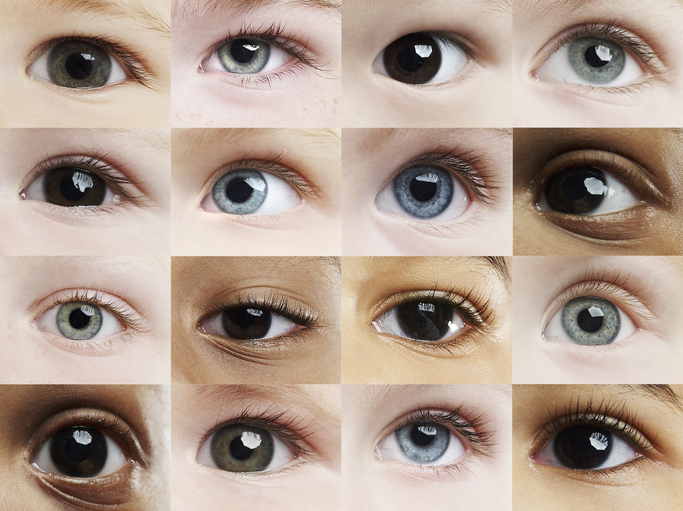Why We Should All Care About Cataracts

June is National Cataract Awareness Month. What better time to be proactive about our precious eyesight?
“Cataracts are the world's leading cause of blindness, accounting for approximately 42 percent of all cases of blindness in all nations. In the United States, most cataracts are age-related, affecting more than half of all Americans older than 65 to some degree. Although the exact cause of age-related cataracts is still being investigated, some scientists suspect that this disorder is linked to chemical changes affecting a class of eye proteins called alpha-crystallins,” according to John Hopkins Medicine.
To put it very simply, the American Optometric Association defines a cataract as a cloudy or opaque area in the normally clear lens of the eye. As you can probably imagine, this cloudiness may cause impaired vision (especially if not treated).

Many celebrities, including Larry King and John Goodman, have shared their stories about overcoming cataracts.
And cataracts can also occur in young people. Actress Mila Kunis suffered from major eye issues when she was in her twenties.
“I was blind in one eye for many years, and nobody knew ... I’m not blind anymore. I had surgery a couple of months ago. They cut it open and dropped a new lens in there,” she said many years ago, according to one report.
Kunis battled an eye condition called chronic iritis. This is what caused a cataract in her eye and led to the blindness.
Aside from it being National Cataract Awareness Month, discussing cataracts is also very relevant now because of the recent protests around the U.S. due to the death of George Floyd. As you know, law enforcement has been using tear gas for crowd control.
And the American Academy of Ophthalmology condemns the use of tear gas, one of the reasons being that being exposed to tear gas may cause cataracts.
First, it’s important to educate yourself a bit more about cataracts. For example, there are different types of cataracts:
- Secondary cataract. These are cataracts that develop from other issues. For example, you can develop cataracts after surgery for another eye issue (such as glaucoma). People with diabetes are at a greater risk of developing cataracts, and steroid use has been linked to the development of cataracts.
- Traumatic cataract. Cataracts that develop after an eye injury (sometimes years after the injury occurs).
- Congenital cataract. Cataracts that occur in newborn babies or develop in childhood (usually in both eyes). Sometimes, these cataracts are so small that they do not impair vision. If they do impair vision, the lenses need to be removed through surgery.
- Radiation cataract. Cataracts that may develop after some types of radiation exposure.
Symptoms of cataracts may include cloudy or blurry vision, seeing colors that are faded, increased glare from headlights and other sources of light (maybe seeing a halo around lights), poor night vision and double vision.
We should all care about cataracts, because developing them is a natural part of aging. Cataracts can grow slowly over time, and you may not have any symptoms in the early stages of cataract development. Or you may mistake your impaired vision for just getting older and not realize that the issue could be cataracts. This is why annual vision and eye exams are critical in being proactive regarding combating cataracts. As we have previously discussed, many people fail to get regular eye exams.
The good news is that if you already suffer from cataracts, cataract surgery, which is the removal of the cloudy eye lens, is a very safe and effective surgery. It is usually an outpatient procedure and is also a very common surgery.
“Cataract removal is one of the most common operations performed in the United States. It also is one of the safest and most effective types of surgery. In about 90 percent of cases, people who have cataract surgery have better vision afterward,” reports the National Eye Institute.
Once the cloudy lens is removed, it is replaced with an intraocular (IOL) lens which is an artificial lens. There are different types of IOLs which you can read about here.
The good news is that you can help delay the development of cataracts as you age by maintaining a healthy lifestyle. And the younger you start the better! As mentioned, people with diabetes are at a greater risk of cataracts. So eat healthily and be physically active in order to maintain a healthy weight and help manage your blood sugar levels.
It is also good to avoid nutritional deficiencies.
Various studies have found associations between low levels of antioxidants (such as vitamin C and vitamin E) and cataract formation. The National Institutes of Health also reports that taking supplements with both riboflavin and niacin (vitamin B3) may help prevent cataracts. Before you implement supplementation, be sure to take a comprehensive nutrient test which will determine if you have any nutrient imbalances or deficiencies. If you do, a competent healthcare professional can work with you on making the necessary dietary changes and/or recommend quality supplements you can take.
“Experts theorize that if the progression of cataracts could be delayed by 10 years, annual cataract surgeries would decrease by 45 percent. Nutrition is one promising way to prevent or delay the progression of cataracts,” (American Optometric Association).
So eat “the rainbow,” meaning a variety of colorful fruits and vegetables. Foods such as carrots, cantaloupe, orange and yellow bell peppers, spinach, green peas and many other colorful fruits and veggies -plant-based foods in general - contain a lot of antioxidants and nutrients needed for overall eye health and delay of cataract development.
It is also important to avoid smoking, drink alcohol in moderation (if at all), protect yourself from the sun by wearing sunglasses and be informed about any medications you are taking. Some medications, such as statin drugs (medication to lower bad cholesterol), may lead to cataract development. Talk to your doctor about medications and your concerns about cataracts.
Protect those precious peepers!
Enjoy your healthy life!
The pH professional health care team includes recognized experts from a variety of health care and related disciplines, including physicians, attorneys, nutritionists, nurses and certified fitness instructors. This team also includes the members of the pH Medical Advisory Board, which constantly monitors all pH programs, products and services. To learn more about the pH Medical Advisory Board, click here.







